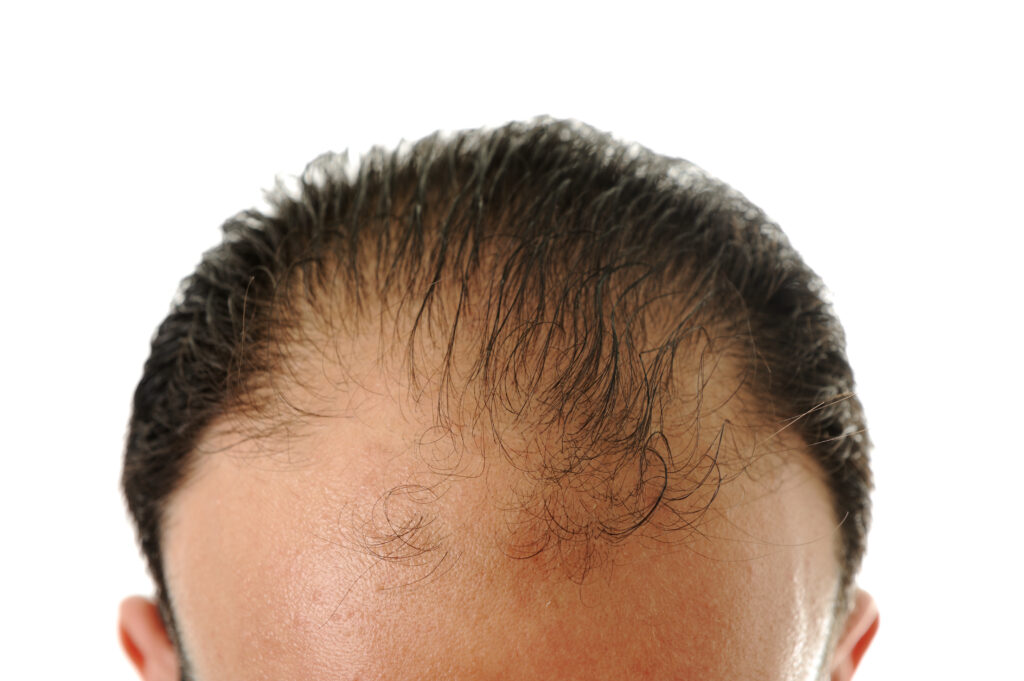Male pattern baldness, medically known as androgenetic alopecia, is more than just a cosmetic concern—it’s a common condition that affects millions of men worldwide. By the age of 50, approximately 50% of men will experience some degree of hair loss. Understanding this condition, dispelling common myths, and exploring effective treatment options can empower you to address your hair loss confidently.
Myths About Male Pattern Baldness
As male pattern baldness has become a widespread issue, it has also given rise to numerous myths and misconceptions. Here are some of the most prevalent myths debunked:
- Baldness is Inherited Only from the Maternal Side: Many believe that if a man’s maternal grandfather was bald, he will also go bald. In reality, genetic predisposition can come from both maternal and paternal sides of the family.
- Wearing Hats Causes Baldness: There’s a common belief that frequent hat-wearing can lead to hair loss. However, hats do not cause baldness unless they are overly tight, restricting blood flow to the scalp.
- Shampooing Causes Hair Loss: Some think that regular washing and using styling products can accelerate hair loss. In fact, most shampoos and conditioners are formulated to maintain scalp health and do not contribute to hair thinning.
- Blow Dryers Lead to Baldness: While excessive heat can damage hair, it does not cause hair loss at the follicle level.
- Scalp Massage Promotes Hair Growth: Though scalp massages can be relaxing, there is no scientific evidence to support the idea that they stimulate new hair growth.
Symptoms of Balding
Recognizing the signs of hair loss early is crucial. Here are some common symptoms:
- Gradual Thinning: This is the most typical sign, often manifesting as a receding hairline in men or overall thinning in women.
- Sudden Loss: Hair may fall out in large chunks, often triggered by stress or trauma.
- Patchy Spots: Some may notice bald patches on the scalp or facial hair.
- Loss All Over: In severe cases, hair loss can occur throughout the body, often due to medical treatments or conditions.
If you notice these symptoms, it may be time to consult with a professional to discuss your options.
Treatment Options for Male Pattern Baldness
For those looking to combat hair loss, several effective treatments are available:
- Styling Techniques: Consult your barber for hairstyles that can give the appearance of fuller hair. Volumizing products can also help.
- Medications:
- Finasteride (Propecia): This prescription pill reduces levels of dihydrotestosterone (DHT), a hormone linked to hair loss. It can be effective in slowing or even reversing hair loss in many men.
- Minoxidil (Rogaine): An over-the-counter topical treatment, minoxidil can stimulate hair growth, although results may vary.
- Hair Transplants: The ARTAS® procedure is a minimally invasive hair restoration technique that uses robotic technology to harvest and transplant hair follicles, resulting in natural-looking results without the plugs, pain, and stitches associated with traditional methods.
- Hairpieces and Wigs: While not a medical solution, high-quality wigs and hairpieces can effectively cover thinning areas for a temporary fix.
The ARTAS® Procedure: A Revolutionary Solution
For those seeking a more permanent solution, the ARTAS® robotic hair transplant offers an innovative approach to hair restoration. This procedure is characterized by:
- Minimally Invasive Technology: The ARTAS® system uses advanced robotics to identify the best hair follicles for transplant. It minimizes scarring and recovery time compared to traditional methods.
- Natural-Looking Results: The precision of the robotic system allows for accurate placement of hair follicles, ensuring a natural appearance.
- Permanent Solutions: The transplanted hair grows naturally and can be styled as desired, giving you back your confidence.
If you’re experiencing the effects of male pattern baldness and looking for a lasting solution, consider scheduling a consultation for the ARTAS® hair transplant. This state-of-the-art procedure can help restore your hair and enhance your self-esteem.
Get Professional Assistance with Male Pattern Baldness
Don’t let hair loss hold you back any longer. Schedule your complimentary consultation today to discuss how the ARTAS® procedure can help you achieve the full head of hair you desire. Take the first step towards regaining your confidence and youthful appearance! Male pattern baldness is a common issue, but it doesn’t have to dictate your self-image. With the right information and treatment options available, you can take proactive steps to manage your hair loss effectively.




